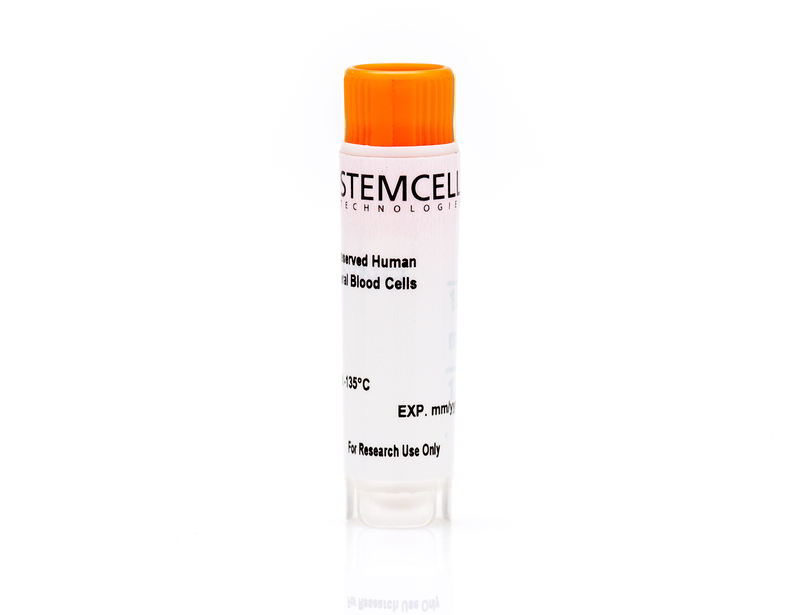Human Peripheral Blood CD19+ B Cells, Frozen
Primary human cells, frozen
概要
Primary human CD19+ B cells were isolated from peripheral blood (PB) mononuclear cells (MNCs) using positive immunomagnetic separation techniques. PB was collected using acid-citrate-dextrose solution A (ACDA) as the anticoagulant.
Cells were obtained using Institutional Review Board (IRB)-approved consent forms and protocols.
Certain products are only available in select territories. Please contact your local Sales representative or Product & Scientific Support at techsupport@stemcell.com for further information.
Cells were obtained using Institutional Review Board (IRB)-approved consent forms and protocols.
Certain products are only available in select territories. Please contact your local Sales representative or Product & Scientific Support at techsupport@stemcell.com for further information.
Contains
• CryoStor® CS10
Subtype
Frozen
Cell Type
B Cells
Species
Human
Cell and Tissue Source
Peripheral Blood
Donor Status
Normal
Purity
The purity of CD19+ B cells is ≥ 90% by flow cytometry.
技术资料
| Document Type | 产品名称 | Catalog # | Lot # | 语言 |
|---|---|---|---|---|
| Product Information Sheet | Human Peripheral Blood CD19+ B Cells, Frozen | 70033 | All | English |
数据及文献
Publications (1)
British journal of haematology 2018 AUG
Paediatric patients with acute leukaemia and KMT2A (MLL) rearrangement show a distinctive expression pattern of histone deacetylases.
Abstract
Abstract
Histone deacetylase inhibitors (HDACi) had emerged as promising drugs in leukaemia, but their toxicity due to lack of specificity limited their use. Therefore, there is a need to elucidate the role of HDACs in specific settings. The study of HDAC expression in childhood leukaemia could help to choose more specific HDACi for selected candidates in a personalized approach. We analysed HDAC1-11, SIRT1, SIRT7, MEF2C and MEF2D mRNA expression in 211 paediatric patients diagnosed with acute leukaemia. There was a global overexpression of HDACs, while specific HDACs correlated with clinical and biological features, and some even predicted outcome. Thus, some HDAC and MEF2C profiles probably reflected the lineage and the maturation of the blasts and some profiles identified specific oncogenic pathways active in the leukaemic cells. Specifically, we identified a distinctive signature for patients with KMT2A (MLL) rearrangement, with high HDAC9 and MEF2D expression, regardless of age, KMT2A partner and lineage. Moreover, we observed an adverse prognostic value of HDAC9 overexpression, regardless of KMT2A rearrangement. Our results provide useful knowledge on the complex picture of HDAC expression in childhood leukaemia and support the directed use of specific HDACi to selected paediatric patients with acute leukaemia.


